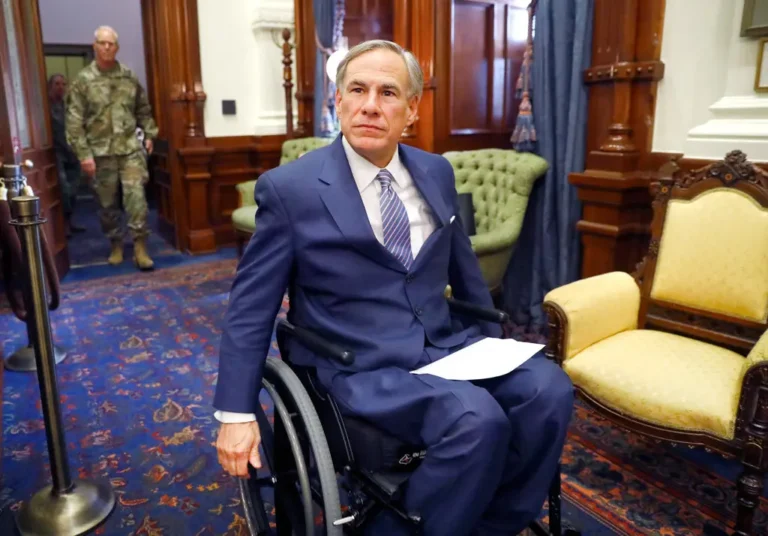Governor Greg Abbott has been a central figure in Texas politics for many years, known for his strong conservative views and impactful leadership. Born on November 13, 1957, in Wichita Falls, Texas, Abbott grew up in Duncanville and pursued higher education at the University of Texas at Austin before earning his law degree from Vanderbilt University Law School. His career began in law, where he quickly rose through the ranks to become a justice on the Texas Supreme Court, serving from 1996 to 2001. Following this judicial role, Abbott was elected Texas Attorney General in 2002, a position he held until 2015. His tenure as Attorney General was marked by his willingness to challenge federal government policies, particularly those he viewed as infringements on state rights.
In January 2015, Abbott took office as the 48th Governor of Texas, succeeding Rick Perry. Since then, he has been re-elected multiple times, maintaining significant support from Texas voters. As governor, Abbott’s leadership reflects a strong commitment to conservative principles, especially on issues like immigration, gun rights, and religious freedom. He has frequently advocated for increased border security and has opposed various federal mandates, emphasizing the importance of state sovereignty.
One of the defining features of Governor Greg Abbott’s political career is his staunch defense of religious expression in public life. Before becoming governor, as Texas Attorney General, Abbott played a key role in a 2005 U.S. Supreme Court case that allowed a Ten Commandments monument to remain on the Texas Capitol grounds. This victory was influential nationwide, shaping ongoing debates about the place of religion in public spaces. Abbott has continued to champion similar causes during his governorship, often signing legislation that supports religious displays and practices in public institutions.
Most recently, Governor Abbott signed a law requiring every public school classroom in Texas to display a framed copy or poster of the Ten Commandments. This mandate affects over 9,100 public schools statewide, serving nearly six million students. The law specifies the size and wording of the display and is part of a broader conservative trend to promote religious values in public education. Abbott also approved a measure allowing a daily voluntary period during school hours for prayer or reading religious texts, open to both students and staff. These legislative actions highlight Abbott’s commitment to integrating religious heritage into public life and education.
Abbott’s political career has not been without personal challenges. In 1984, he became paralyzed from the waist down due to an accident when a tree fell on him while jogging. Despite this life-altering event, Abbott persevered and continued his legal and political career with determination, often being cited as an example of resilience and strong will. His disability has not hindered his active involvement in politics and governance.
Governor Greg Abbott’s public image is strongly tied to his conservative policies and leadership style. He is viewed as a powerful figure in Texas politics who consistently promotes Republican priorities. His administration’s policies on immigration, economic development, and education reflect a conservative approach aimed at reinforcing traditional values and state authority. Abbott’s influence extends beyond Texas, as his positions often align with broader national conservative movements.
Throughout his time in office, Abbott has faced opposition from civil rights groups and advocates for religious freedom who argue that some of his policies blur the line between church and state. Nevertheless, he remains steadfast in defending these laws and has expressed readiness to take legal challenges all the way to the U.S. Supreme Court. His long history with such cases indicates his willingness to engage in high-profile legal battles to uphold what he considers the constitutional place of religion in public life.
Governor Greg Abbott’s career continues to evolve, with his actions shaping the legal and cultural landscape of Texas. His leadership style, marked by a mix of legal expertise, personal resilience, and political conviction, ensures that he remains a significant and sometimes controversial figure in both state and national politics.







